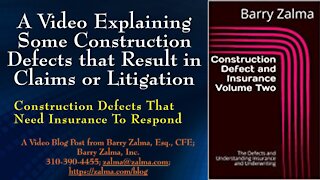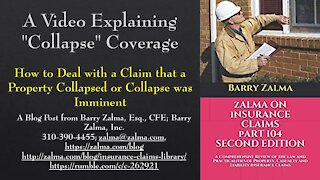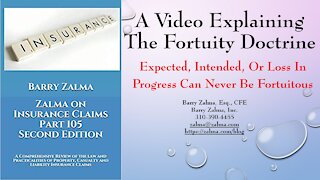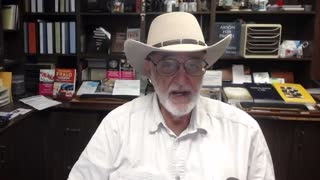Premium Only Content

A Video Explaining Exclusions for Inherent Vice, Latent Defects and Wear and Tear
Inherent Vice
Inherent vice relates to internal decomposition or some quality which brings about the object’s own injury or destruction, not an extraneous cause. [Employers Casualty Company v. Holm, 393 S.W. 2d 363, 367 (Tex. Civ. App. 1965).] The subjective test for fortuity raises questions regarding whether the inherent vice exclusion is effective.
Latent Defect
A latent defect is a defect that could not be discovered by any known or customary test. General Motors Corp. v. The Olancho, 220 F. 2d 278, 2d. Cir. 1955. Analysis indicates that the latent defect and inherent vice exclusions are attempts to embody, in the text of the policy, the need for fortuity. An insurer can only reasonably be expected to insure against the happening of a contingent or unknown risk of loss.
Wear and Tear
The wear and tear exclusion, perhaps because it is so obvious, has seldom been the subject of appellate review. The phrase has been defined as:
[C]onstruing the words “wear and tear” in their every day common usage, we are convinced that the words . . . mean simply and solely that ordinary and natural deterioration or abrasion which an object experiences by its expected contacts between its component parts and outside objects during the period of its natural life expectancy. Cyclops Corporation v. The Home Insurance Company, 352 F. Supp. 931 (W.D. Pa. 1973).
-
 4:56
4:56
Barry Zalma, Inc. on Insurance Law
1 year agoProperty Investigation Checklists - 14th Edition
2842 -
 11:12
11:12
Barry Zalma, Inc. on Insurance Law
5 years agoA Video Explaining the Latent Defect and Inherent Vice Exclusions
26 -
 16:55
16:55
Barry Zalma, Inc. on Insurance Law
4 years agoA Video Explaining Intentional Acts Exclusions
83 -
 14:57
14:57
Barry Zalma, Inc. on Insurance Law
5 years agoA Video Explaining Some Construction Defects that Result in Claims or Litigation
192 -
 17:01
17:01
Barry Zalma, Inc. on Insurance Law
4 years agoA Video Explaining "Collapse" Coverage
170 -
 7:58
7:58
Barry Zalma, Inc. on Insurance Law
4 years agoA Video Explaining Some Advertising Injury Coverage
102 -
 16:42
16:42
Barry Zalma, Inc. on Insurance Law
5 years agoA Video Explaining Casualty Insurance
79 -
 14:15
14:15
Barry Zalma, Inc. on Insurance Law
5 years agoA Video Explaining the Statutes of Repose
143 -
 21:18
21:18
Barry Zalma, Inc. on Insurance Law
5 years agoA Video Explaining The Fortuity Doctrine
40 -
 16:33
16:33
Barry Zalma, Inc. on Insurance Law
5 years agoA Video Explaining the Unethical Insured
17